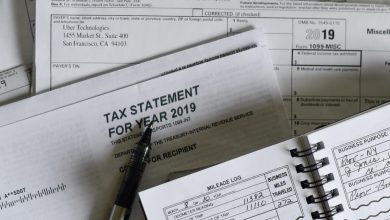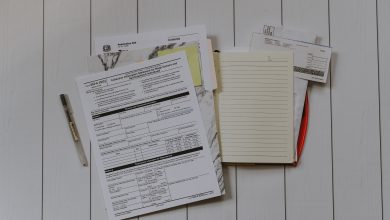Taxes: How to Pay the IRS

Traditionally, employers pay the IRS taxes on behalf of their employees. In short, they withhold the amount due from your monthly salary and send you your after-tax paycheck. At the end of the year, the IRS pays you back any excess amounts in the form of a refund. However, what happens when you end up owing money? Similarly, business owners, freelancers, and independent contractors get paid in full. This is because they don’t have any employers who withhold taxes for them.
In those instances, the taxpayer must pay the IRS directly. Luckily, there are multiple ways to do so. Some of them require cautious and detailed planning, while others are relatively easy and straightforward. Whichever method you choose, keep in mind that transaction fees may apply. Just as importantly, the IRS will rely on the same payment method when they send you your refund.
A Lump Sum Payment
The simplest and most straightforward option is a one-time payment. During each year’s tax season, you would pay the IRS the full amount for the past 12 months. There are many advantages to utilizing this approach. First of all, you get your tax bill out of the way early (as opposed to making recurring payments). Secondly, this option is even more feasible when you can afford to pay the amount in full.
Having said all that, a lump-sum payment requires a lot of planning, particularly when you’re a business owner or self-employed. Since employers deduct taxes from employees’ salaries, W-2 workers end up owing a very small amount, if anything at all. In fact, most of them get a refund. Business owners and independent contractors, on the other hand, must do this on their own. They have to calculate the anticipated income, identify their tax bracket, and set aside the right amount in a savings account.
Making a Plan
To give an example, a freelancer expects to make $100,000 in the upcoming year. Experienced business owners and contractors can use their past earnings as a guide. New ones, meanwhile, should carefully calculate the estimated income in order to minimize errors or surprises. After that, they figure out the annual tax bill based on their tax bracket.
In our example, the freelancer owes 24% (or $24,000) if they’re single and 22% (or $22,000) if they’re married. Since this is the annual tax bill, the payer would divide the amount by 12 to figure out their monthly amount. Because taxes are not due until the end of the year, the freelancer must take out tax money from their earnings each month and set it aside.
Above all else, this estimate doesn’t include tax deductions, such as business expenses and other costs. For more details on how to calculate these items, check out our work-at-home tax deductions article.

How to Pay the IRS in Installments
At times, making a lump-sum payment is difficult. In light of this, you can pay the IRS once every quarter or month. To clarify, let’s go back to the freelancer example. If they couldn’t cover the $22,000 or $24,000 in full at the end of the tax year, the freelancer has two options. Firstly, they can divide the amount by four and pay it once per quarter (or three months). Usually, these payments are due at the end of April, July, October, and January of the next year.
Secondly, the freelancer may pay the IRS each month at $1,833 or $2,000 when they are single or married, respectively. Yet what if they can’t afford to do so? The IRS will let them extend that period. That is to say, if the freelancer decides to take care of these funds over a two-year timeframe, they would owe half of the amount because the payment period doubled. It is important to note that this applies to W-2 employees, as well. If they end up owning money, the employee could pay the IRS in monthly or quarterly installments, based on what’s affordable.
Fees and Payment Methods
Whether you are an independent contractor or an employee, you must pay the IRS directly. While employers do deduct taxes from your paycheck, it is the employee’s responsibility to pay any additional amounts that are due at the end of the year. When you pick a payment method, several factors should influence your choice. First of all, some options (such as wire transfers) come with transaction fees. This could get especially burdensome when you make monthly or quarterly installments.
To avoid this issue, consumers should contact their financial institution or bank to learn about their check and/or wire transfer fees. Equally as important is the speed of the transaction. That is to say, the IRS will give you your refund based on the payment method that you choose. If getting that money quickly is your top priority, setting up wire transfers is the best option. The same apples to taxpayers who recently moved. Unless they update their address with the IRS, the refund check could take longer until it arrives in the mail.

Final Words
Whether you’re a W-2 employee who owes money, self-employed, or a business owner, there are several ways to pay the IRS. A one-time payment is the easiest and quickest option, but it requires you to make plans ahead of time. Otherwise, monthly and quarterly installments could suit many taxpayers, especially when they can’t afford to pay the full amount at once. Fees and transaction costs are also important.
Above all else, you shouldn’t forget about your refund. The IRS will send your refund to the account or address that posted the initial (or recurring) tax payment. Yet regardless of which method you opt for, taxpayers certainly need to carefully think about the upcoming 12 months. Filing a tax return can be tedious, but unexpected transaction fees and a delayed refund are even more long-winded.



